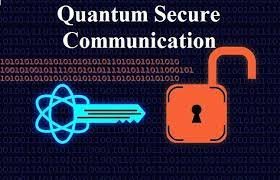Introduction
In the realm of quantum physics, a groundbreaking innovation is underway – the development of the Quantum Internet. This quantum leap in technology is poised to revolutionize secure communication, offering unprecedented levels of encryption and paving the way for a new era of quantum networking. In this article, we explore the principles behind Quantum Internet and its transformative impact on the security landscape of communication.
Quantum Bits (Qubits) and Entanglement
At the heart of Quantum Internet lies the concept of quantum bits or qubits. Unlike classical bits that exist in a binary state (0 or 1), qubits can exist in multiple states simultaneously, thanks to a phenomenon known as superposition. Furthermore, qubits can be entangled, meaning the state of one qubit is directly linked to the state of another, regardless of the physical distance between them.
Quantum Key Distribution (QKD)
One of the key applications of Quantum Internet is Quantum Key Distribution (QKD). In traditional cryptography, keys are exchanged between parties to secure communication. However, in the quantum realm, QKD uses entangled qubits to create a shared key between the sender and receiver. Any attempt to intercept this key would disturb the quantum state, alerting the parties to the presence of an eavesdropper.
Quantum Entanglement for Security
The utilization of entangled qubits in Quantum Internet ensures a level of security that is theoretically unbreakable. Attempts to intercept or measure the quantum state of entangled particles result in a disturbance that can be detected by the communicating parties. This characteristic forms the basis for unbreakable quantum encryption, a stark contrast to classical encryption methods that could potentially be deciphered with sufficient computing power.
Securing Communication Channels
Quantum Internet’s unbreakable encryption has profound implications for securing communication channels. Whether it’s sensitive government communications, financial transactions, or confidential corporate data, the use of quantum-secure encryption ensures that information remains private and immune to the threats posed by classical cryptographic attacks.
Quantum Teleportation for Information Transfer
In addition to secure communication, Quantum Internet introduces the concept of quantum teleportation. While not teleportation in the sci-fi sense, quantum teleportation involves the transfer of quantum information from one location to another using entangled qubits. This process could revolutionize secure data transfer, especially in the context of quantum computing networks.
Global Quantum Networks
The vision for Quantum Internet extends beyond individual secure communication links. Scientists envision the creation of global quantum networks where entangled qubits span vast distances. Such networks could facilitate secure communication between any two points on the globe, contributing to a new era of quantum communication infrastructure.
Overcoming Quantum Decoherence
Quantum systems are highly sensitive to their environment, a phenomenon known as decoherence. External factors can disrupt the delicate quantum states of qubits, affecting the reliability of quantum communication. Overcoming quantum decoherence is a key challenge in the development of robust Quantum Internet systems.
Scalability and Practical Implementation
Building large-scale, practical Quantum Internet systems poses significant challenges. As the number of qubits and entangled particles increases, maintaining coherence and managing quantum interactions become increasingly complex. Researchers are actively addressing these scalability challenges for widespread implementation.
Quantum Internet and Quantum Computing Synergy
The synergy between Quantum Internet and quantum computing is a fascinating prospect. Quantum computers, with their unparalleled processing capabilities, could leverage the secure communication channels provided by Quantum Internet. This collaboration could accelerate advancements in quantum technologies and usher in a new era of computing.
Global Quantum Communication Networks
The realization of Quantum Internet could lead to the establishment of global quantum communication networks. These networks would not only revolutionize secure communication but also pave the way for innovative applications in fields such as finance, healthcare, and information exchange among quantum computers.
Conclusion
In conclusion, Quantum Internet stands at the forefront of a quantum revolution, poised to transform the landscape of secure communication. The principles of entanglement and superposition open doors to unbreakable quantum encryption, securing the future of confidential communication. As researchers overcome challenges and quantum technologies evolve, Quantum Internet holds the promise of reshaping the way we connect and communicate in a secure and quantum-entangled world.
FAQs
How does Quantum Internet ensure secure communication?
Quantum Internet ensures secure communication through the use of entangled qubits and quantum key distribution (QKD), providing unbreakable quantum encryption that is theoretically immune to eavesdropping.
What is Quantum Key Distribution (QKD) in Quantum Internet?
Quantum Key Distribution (QKD) is a key application of Quantum Internet where entangled qubits are used to create a shared key between communicating parties. Any attempt to intercept this key is detectable due to the principles of quantum mechanics.
How does quantum teleportation work in Quantum Internet?
Quantum teleportation in Quantum Internet involves the transfer of quantum information from one location to another using entangled qubits. While not teleportation in the sci-fi sense, it holds the potential for secure data transfer, especially in quantum computing networks.
What challenges does Quantum Internet face in practical implementation?
Quantum Internet faces challenges such as quantum decoherence, where external factors disrupt the delicate quantum states of qubits, and scalability issues in building large-scale, practical quantum communication systems.






